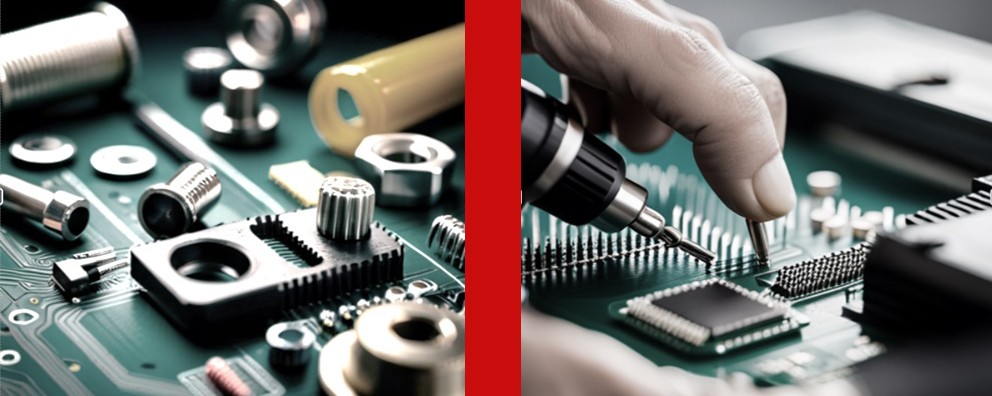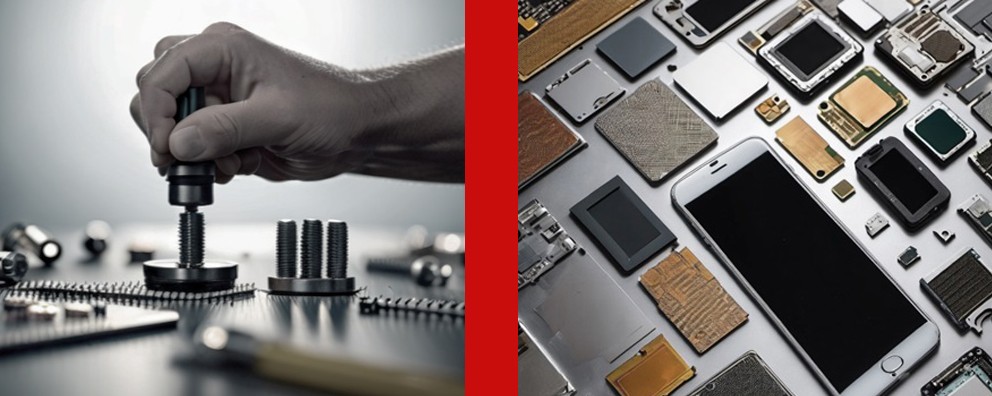The right to repair products pertains to the ability of consumers to fix, modify, or upgrade their own devices, without being hindered by manufacturer restrictions. Traditionally, manufacturers have employed practices like using proprietary screws, adhesives, tamper labels and digital locks to discourage consumers from attempting repairs. In practice, most manufacturers operate a strict legal policy, where user access to enclosures invalidates any guarantees or warranties and voids any ongoing support agreements.
These policies are not exclusively motivated by profit, there are legitimate safety concerns regarding allowing consumer access to complex electrical devices, and a pragmatic understanding that many consumers do not have the tools or aptitude to perform meaningful repairs themselves. There is also a legitimate right of manufacturers to protect themselves against legal claims from loss or injury caused by poorly maintained or repaired products.
In response, right to repair laws aim to make repair information, guidance, tools, and replacement parts more accessible to consumers (and third-party repairers), allowing them to extend the lifespan of their devices and reduce electronic waste, whilst protecting them from harm. This legislation will inevitably extent to design specification and development of new products to facilitate adoption of the proposed repair and upgrade agenda.
Environmental Impact:
One of the primary motivations behind advocating for the right to repair, is reducing the environmental impact of electronic waste.
‘Experts expect roughly 5.3 billion mobile / smartphones will drop out of use this year (2022). Stacked flat atop one another at an average depth of 9 mm that many disused phones would rise roughly 50,000 km – 120 times higher than the International Space Station; one-eighth of the way to the moon. Less than 15pc will be disposed of adequately with most going to incineration or landfill – weee forum-April 2022’
As technology advances, the lifespan of devices tends to decrease, contributing to the growing issue of electronic waste disposal. Highly specified products, like smartphones and laptops also contain a complex blend of materials and often become obsolete due to advances in software and operating systems, rather than becoming mechanically redundant.
Metals are what make smartphones so “smart.” An average smartphone may contain up to 62 different types of metals from Nickel to Gold, Silver, Copper, Aluminium, Platinum, and Palladium. One rather obscure group of metals—the rare-earth metals—plays a vital role. The rare-earth metals include scandium and yttrium, as well as elements 57–71. Elements 57–71 are known as the lanthanides, because they begin with the element lanthanum.’ – Brian Rohrig – ACS (American Chemical Society).‘
To compound the issue, complex assembly methodologies can severely inhibit re-processors ability to cost-effectively reclaim precious resources from electronic goods.
By enabling consumers to repair and maintain their devices, right to repair law is intended to significantly reduce the environmental footprint associated with electronic waste and promote a more sustainable approach to technology consumption. The ability to repair is derived from ground up design principles, for instance product modularisation, allowing for plug-and-play upgrades, which do not require specialist tools or knowledge to perform. It is a valid desire, but can be difficult for manufacturers to implement in a safe, cost effective and practical way.
There has also been a perception of general apathy towards repair over replacement from consumers, with a number of innovative companies failing to gain traction in the market with their modular electronic products. Wider implementation will also take an informed shift in the demands of consumers, nurtured by manufacturer education and bias. For instance, are consumers willing to forgo current product features and miniaturisation to allow for increased modularisation and repairability? Do consumers value newness over upgrade? What does the new consumer business model look like, if not driven purely by orchestrated obsolescence?
Economic Implications:
The right to repair has significant economic implications. Allowing consumers and independent repair professionals access to repair information and parts fosters a competitive market for repair services. This can result in lower repair costs, as consumers are not solely reliant on manufacturers’ authorised parts and repair services, which are often more expensive. Moreover, a flourishing repair industry can create jobs and stimulate economic growth at the local level. This is particularly true in the developing world where complex products maybe crucial, but scarce, and the inability to perform simple repairs or source suitable parts may have palpable detrimental consequences. Conversely there will have to be a fundamental shift in business model to sustain comprehensive right-to-repair legislation. Current consumer-durable models are dominated by lifespan-engineered obsolescence.
‘Though some of these examples of planned obsolescence are egregious, it’s overly simplistic to condemn the practice as wrong. On a macroeconomic scale, the rapid turnover of goods powers growth and creates reams of jobs – just think of the money people earn by manufacturing and selling, for instance, millions of smartphone cases. Furthermore, the continuous introduction of new widgets to earn (or re-earn) new and old customers’ dough alike will tend to promote innovation and improve the quality of products.
As a result of this vicious, yet virtuous cycle, industry has made countless goods cheap and thus available to nearly anyone in wealthy Western countries, the Far East, and increasingly so in the developed world. Many of us indulge in creature comforts unimaginable a century ago.’ – Adam Hadhazy – BBC Futures
Challenges and Opposition:
In spite of the undeniable advantages, the right to repair movement encounters resistance from certain manufacturers who posit that divulging repair information and providing parts might jeopardise the security and intellectual property inherent in their products. Advocates for right to repair laws, however, contend that striking a delicate balance between addressing security concerns and upholding consumer rights is crucial. They stress the importance of fostering transparency and collaboration between manufacturers and consumers.
Furthermore, the discussion around right to repair extends to legitimate safety concerns associated with the utilisation of non-proprietary parts. This concern has been accentuated by a series of fires linked to the ‘hacking’ of electronic scooters and bikes to enhance performance. The improper specification and installation of non-proprietary battery products have raised substantial safety issues, prompting a widespread ban on scooters across Transport for London (TFL) and most major train services in the UK.
Another dimension to this debate revolves around arguments favouring product improvement over repair. Proponents of this perspective argue that generational advancements in products can result in enhanced efficiency and a diminished overall environmental footprint. This continual improvement is driven by both the competitive dynamics among manufacturers and legislative measures. Ongoing legislative considerations, influencing factors like maximum wattage and performance of domestic products, are poised to enhance their environmental credentials throughout their entire lifecycle.
To assess the environmental impact of products, intricate lifecycle calculations can be undertaken, weighing the retention of older products against their replacement with more efficient alternatives. This comprehensive approach aims to determine whether preserving older products or adopting newer, more efficient ones yields a positive environmental outcome. This debate is central to the introduction of EV replacement for ICE vehicles, not least in the developing world.
Global Initiatives:
Several countries have taken steps to address the right to repair by either proposing or passing legislation. The European Union, for example, has introduced the Ecodesign Directive, which includes provisions promoting repairability for certain products. In the United States, various states have considered right to repair bills, with some successfully passing legislation. These initiatives signify a growing acknowledgment of the importance of consumer rights in the digital age.
The UK Government has implemented new Ecodesign for Energy-Related Products and Energy Information Regulations 2021, known as the “Right to Repair Regulations,” effective from July 1, 2021. These regulations aim to enhance producer responsibility, decrease energy consumption and electronic waste, and empower consumers to identify energy-efficient products. The “right to repair” provision grants professional repairers access to spare parts and technical information, with manufacturers having up to 2 years to make spare parts available. – https://www.gov.uk/guidance/placing-energy-related-products-on-the-uk-market
The regulations align with equivalent EU standards, with Northern Ireland following EU requirements under the Northern Ireland Protocol. The initiative is part of a broader global trend addressing the environmental impact of product life cycles. Additionally, the EU Circular Economy Action Plan includes a “right to repair” initiative, influencing the UK’s regulations. The UK government’s objectives include reducing energy consumption, carbon emissions, and costs, with an estimated 21.5 TWh of energy savings and 1.7 MtCO2 carbon savings by 2050.
https://ec.europa.eu/commission/presscorner/detail/en/QANDA_19_5889
The regulations cover specific products, including electric motors, electronic displays, household appliances, commercial refrigeration, and welding equipment, introducing higher minimum energy performance standards, material efficiency, and a “right to repair.”
The “right to repair” requirements oblige manufacturers to provide spare parts for specified household appliances for 7 to 10 years, aiming to prolong product life, reduce waste, and offer consumers the ability to repair appliances.
Despite being hailed as a “right to repair,” the regulations primarily target professional repairers, not consumers directly. Consumer groups advocate extending the regulations to cover additional appliances like laptops and smartphones. The regulations represent the UK’s commitment to environmental sustainability, aligning with global efforts to promote circular economies and reduce electronic waste.
Conclusion:
The right to repair products is a crucial aspect of consumer rights and environmental sustainability. As technology continues to shape our lives, it is imperative to strike a balance between innovation and the fundamental rights of consumers. Legislation supporting the right to repair not only empowers consumers to take control of their devices but also contributes to a more sustainable and economically vibrant future. As the global community grapples with the challenges of electronic waste and limited product lifespans, embracing the right to repair is a step toward a more equitable and environmentally conscious approach to technology.
Optima provides a full industrial design and engineering service. We have developed a wide variety of products including industrial, consumer, medical and transport solutions. We can help advise on and develop complient products across multiple product sectors.
Our goal is to develop long term partnerships with organisations and individuals to design great products. With over 25 years experience we understand the complexities of products and more importantly, how to get them made.



